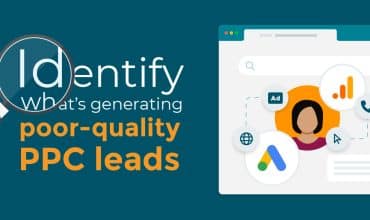Misattribution: Is your healthcare lead attribution suffering?
Patients have greater access to information about healthcare through more channels than ever before: mobile, social media, voice search and paid advertising, to name just a few. Providing prospective patients with more ways to access your practice is a positive step towards more leads.
It also means that, as a marketer, you have the difficult task of understanding where your enquiries are coming from, and which channels are working. This is where lead attribution comes into play.
Attribution is a vital step in marketing strategies across all industries. How can you tell if your marketing efforts are successful if you can’t attribute conversions to specific activities?
Marketers across the board have some form of attribution model in place, allowing them to optimise profitable channels and prove the return on investment (ROI) of the campaigns they’re running. However, are they using the correct attribution model for the type of business? And are they sure they are capturing every touchpoint in the patient’s journey?
The answer is probably not. Here’s why…
Crediting the wrong marketing source to the lead
Many marketers use a ‘last click’ attribution model. This assigns credit for the conversion to the final touchpoint in the patient’s journey.
Crediting the last step in your patient’s journey is a common mistake healthcare (and other) marketers still make. It means they could be assigning credit to less profitable channels, or would potentially lead to them eliminating the better performing supporting channels.
Consider the journey of a patient. They’re searching for a particular cosmetic procedure online and they come across your PPC (pay per click) ad for the procedure in the search results. They click on the ad, but don’t have time to contact you. Later in the week, they’re shown a Facebook remarketing ad. They click again, and call you to book a consultation. In this case, you might only attribute the lead to the Facebook remarketing ad when, in actual fact, both channels played a critical role in that patient path to conversion.
Without the paid search ad, the prospect may not have found you. However, without the social remarketing ad, the patient may have forgotten to contact you altogether, or made an appointment with another clinic.
Take another example: Say you use offline marketing materials, such as flyers or a newspaper ad, and a prospective patient calls the number to ask a question, then later they visit your website and book an appointment. You’d probably attribute the conversion to a direct visit, rather than the initial flyer and phone call – both of which played important steps in this customer’s journey. With a last click attribution model, offline material will almost always be discounted, meaning you can’t see the direct ROI from this activity.
This is why multi-channel attribution is the most accurate model. You can see the entire journey – from the first touchpoint, supporting interactions in the middle, and the final touchpoint before conversion, all of which play a vital role in converting your leads.
There are different types of multi-channel attribution models:
- Linear attribution model: This model credits each touchpoint in the journey equally for the conversion. It’s ideal if you just want to understand the customer journey and engagement, and for businesses that have a shorter sales cycle.
- Time decay attribution model: This model assigns more credit to a touchpoint the closer it is to the conversion. Unlike last click attribution, it still credits all the touchpoints, but assigns more weight to the final interaction.
- Position-based attribution model: This model gives more revenue credit to certain stages of the buying journey. It gives more credit to the important touchpoints, such as first and last clicks, but still assigns some credit (albeit less) to the other touchpoints in between.
- Custom attribution model: Similar to position-based, a custom attribution model allows you to determine which touchpoints you want to assign the most credit to. If you have more stages in your customers’ journey than is given in position-based models.
- Algorithmic attribution model: This model creates rules for allocating revenue credit based on analysis of data from all your past touchpoints, and determining which touchpoints are predictive of revenue.
Not using the right technology
Google Analytics, when used correctly, is a great free tool for attribution if all of your conversions happen online. In the healthcare sector, this is unlikely to be the case.
Healthcare providers find that the phone is still a patient’s preferred method of communication. Despite offering online booking forms, contact forms, apps, and live chat features, Pulse Today found that 47% of patients prefer phone consultations.
This is largely because of the sensitive nature of health-related matters. Patients want to ensure that they’re seeing the right person, are getting their questions answered, and that the appointment is correct. It might not always be the last touchpoint in the patient’s path to conversion, but the phone is definitely a crucial step in many patients’ healthcare journeys.
Unfortunately, Google Analytics doesn’t automatically track calls. Integrating call tracking technology with your existing analytics gives you an extra layer of insight, enabling you to accurately attribute phone calls to specific marketing activities.
Mediahawk gives you the ability to analyse the touchpoints before and after a phone call was made. For example, a patient clicks on a paid search ad, is taken to the website, calls to ask a question, then visits the website directly later to book a consultation. Call tracking tells you:
- Which keyword the patient searched for
- That they made a phone call to you
- Which page they called you from
- What they did on your site after the phone call (did they look at other pages, or exit straight away?), and
- If they took any other actions, such as making an online enquiry, or if they came back on subsequent visits.
You can also record your inbound calls, and analyse the conversations in greater depth quickly and easily using speech analytics.
Using other attribution models, in the example above the patient’s conversion would have been attributed to a direct visit to the website. However, the paid search ad played a key part in the conversion, and therefore had a high ROI. With call tracking in place, you’ll see this and make sure you allocate budget to all your most profitable, supporting channels – not just the last touchpoint in the journey.
Not using social analytics data to optimise multiple touchpoints
You shouldn’t rely on Google Analytics alone to track the effectiveness of online activity. Many online channels have their own analytics data, social media in particular, that you can analyse in conjunction with call tracking and Google Analytics to get the full picture across all touchpoints in the patients’ journey.
A prospective patient may see a Facebook ad for a free download of an eBook about a procedure they’re considering. They click on the download button which directly downloads the eBook onto their device and, once they’ve read the eBook, they call the number at the end to book a consultation.
If the download button doesn’t redirect to your website, Google Analytics won’t pick up any of this prospect’s journey. Facebook Ads Manager can tell you the number of people who clicked the download button on the ad and, from here, call tracking shows you how many people actually called the number from the eBook.
Social media analytics also help to collect more data about converting patients, i.e. Facebook ads may collect different demographic data to Google Ads, but this information can all be put into your CRM (Customer Relationship Management) system, which allows you to improve your segmentation and targeting for your future marketing activity and campaigns.
Book a demo now and get a deeper view into your entire patient journey, from first interaction, to enquiry, and beyond.



